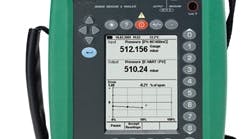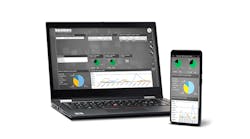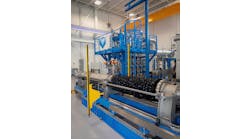Who checks the checkers and controls the controllers? You know who. In process control and automation, few measurements, variables or processes stay consistent or in tune for long because of the rough conditions in which they must operate. Consequently, there’s only one job more important than sensing and controlling the basic elements of a process, and that job is calibrating the controllers and other instruments themselves.
However, for many years and often yet today, these calibrators were large, bulky devices, which usually had to be wheeled on carts far out to controllers that needed service in the field. As a result, some developers have built more compact devices and accompanying software to make calibration tasks easier. Undoubtedly, one of the most notable is Finland-based Beamex’s MC5 fieldbus and multifunction calibrator and its CMX calibration software.
MC5 combines a multifunction calibrator and a fieldbus configurator. Fieldbus functions include reading digital output of the fieldbus transmitter, changing configurations of transmitters and transmitter trimming. Calibrating capabilities include pressure, temperature, electrical and frequency signals. MC5 supports HART communication and can be used for calibrating Foundation fieldbus H1 or Profibus PA transmitters.
For instance, engineer Paul Selzer reports that Abbot Vascular in Temecula, Calif., uses 10 MC5s to calibrate instruments that measure temperature, pressure, flow and voltages in its balloon catheter production process.
Before adopting Beamex’s MC5s Selzer adds that Abbot Vascular used other pressure and temperature testers, but these were “big, gray boxes” that weren’t as accurate or as easy to move around. “Our MC5s are more accurate, compact and easy to use, and this saves us lots of time and labor,” says Selzer. “MC5 is accurate to 0.5% of full scale (to ±1.0 psi), which is 10 times more accurate than before. This means tighter process control, less measurement doubt, fewer production-line failures and better quality products.”
Similarly, Mike Rightmer, control maintenance mechanic at DAK Americas in Leland, N.C., says his firm had used older Beamex equipment for years to calibrate the temperature and pressure devices used in its chemical manufacturing processes, but migrated to MC5 and CMX software because they can do all the needed calibration jobs in one little box. “We have terephthalic acid (TPA) and resins plants, and so we calibrate many temperature and pressure switches and transmitters,” explains Rightmer. “Now, instead of grabbing six devices and trying to find a power source, we use MC5 and its own 24-V power source to hook up and work immediately.”
Rightmer adds that MC5’s accuracy eliminates a lot of guesswork and requires fewer trips to the shop. “In the past, we might be able to take four devices per day to the shop for recalibration,” he says. “Now, we do eight per day by calibrating in the field.”
Finally, Mills Landreth, E&I maintenance engineer at Boehringer-Ingelheim Chemical in Petersburg, Va., reports that his pharmaceutical ingredient plant uses three MC5s and CMX software because the calibration software it used previously was non-documenting and prone to human error. “MC5 and CMX organize our database and make all our data easier to retrieve,” says Landreth.
For more information, contact Beamex at www.beamex.com.




